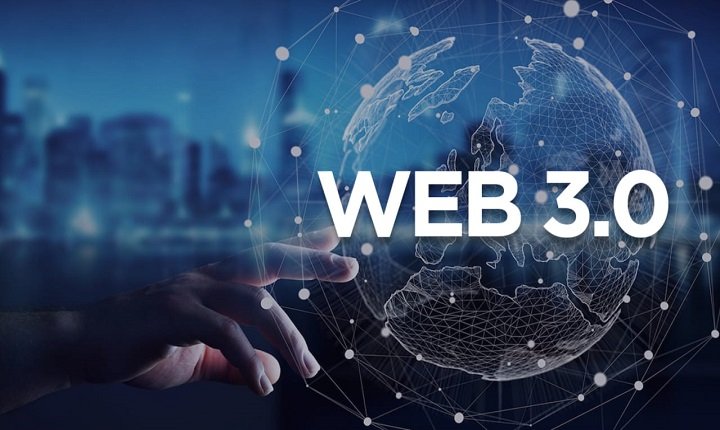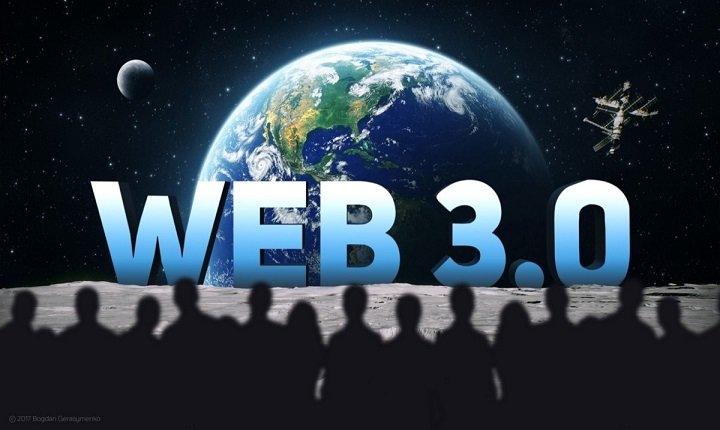
Web 3.0: Revolutionizing the web has gone through noteworthy changes over the a long time, changing how we live, work, and interface with each other. From the early days of straightforward websites to the complex, intuitively stages we utilize nowadays, each organize of the internet’s advancement has brought modern conceivable outcomes. Presently, we’re on the brink of the another huge leap—Web 3.0.
In this web journal, we’ll investigate what Web 3.0 is, why it’s critical, and how it’s balanced to revolutionize the web as we know it. By the conclusion of this post, you’ll have a clear understanding of this unused period of the web and its potential to alter our lives.
Web 3.0: Revolutionizing?

It points to make a more cleverly, open, and user-centered web encounter. Not at all like its forerunner, Web 2.0, which is ruled by huge tech companies and centralized stages, Web 3.0 looks for to provide clients more control over their information and online experiences.
At its center, Web 3.0 employments innovations like blockchain, fake insights (AI), and the Web of Things (IoT) to make a more straightforward and secure web. In this unused form of the web, clients can connected straightforwardly with applications and administrations without depending on middle people like Google or Facebook. Instep, blockchain innovation permits for secure peer-to-peer intuitive, making a web that is more decentralized and user-focused.
The Travel from Web 1.0 to Web 3.0
Before jumping more profound into Web 3.0, it’s accommodating to get it the movement of the web over time:
- Web 1.0 (The Inactive Web): This was the to begin with stage of the web, essentially centered on inactive websites. Clients may as it were see substance without collaboration with it. Think of it as a monster computerized library where you may as it were perused, not contribute.
- Web 2.0 (The Social Web): This stage presented energetic websites and user-generated substance. Social media stages, blogs, and video-sharing locales developed, permitting clients to make, share, and associated with substance. Be that as it may, huge enterprises started to rule, owning and controlling most of the data.
- Web 3.0 (The Decentralized Web): Presently, we are entering a unused period. In Web 3.0, information proprietorship shifts from huge companies to people. Much obliged to blockchain and decentralized innovations, clients pick up more control over their online intelligent, security, and data.
Key Highlights of Web 3.0
So, what makes Web 3.0 diverse from the web we utilize nowadays? Let’s investigate its key features.
1. Decentralization
In Web 3.0, no single substance controls the whole web. Not at all like Web 2.0, where companies like Google, Facebook, and Amazon have centralized control over stages, Web 3.0 is decentralized. Data is dispersed over different hubs, and control is shared among clients. This implies less agents and more independence for people. Blockchain innovation plays a significant part here, guaranteeing that exchanges and intuitive can happen straightforwardly between users.
2. Information Possession and Privacy
In differentiate, Web 3.0 puts clients in charge of their claim information. Instep of giving over information to companies, blockchain permits clients to keep up possession of their individual data. You choose who can get to your information, and you can indeed select to monetize it yourself.
3. Semantic Web of Web 3.0: Revolutionizing
The term “semantic web” alludes to a web that gets it and deciphers the setting of the data it experiences. Web 3.0 employments AI to make more brilliant look motors and more instinctive web encounters. For occasion, instep of writing a particular state into a look motor, Web 3.0 advances might get it the setting behind your inquiry and give more exact results.
4. Counterfeit Insights and Machine Learning
Web 3.0 coordinating counterfeit insights (AI) and machine learning to make a web that “learns” from client intelligent. This implies websites and applications can give personalized proposals, computerize certain assignments, and progress client encounters over time.
5. Interoperability
In Web 3.0, stages and applications can effortlessly communicate and share information with one another. This interoperability breaks down silos and guarantees a consistent encounter over diverse stages. For illustration, a decentralized app (dap) on one blockchain can effectively connected with another dap on a distinctive blockchain, making the web more associated than ever before.
How Web 3.0 is Revolutionizing Diverse Industries
Web 3.0 isn’t fair a concept; it’s as of now making waves in different businesses. Let’s take a closer see at how this modern time of the web is changing diverse sectors.
1. Back (Defib)
One of the most noteworthy impacts of Web 3.0 is in the budgetary segment through Decentralized Back (Defib). Defib kills the require for conventional budgetary educate like banks. Instep, clients can borrow, loan, exchange, and gain intrigued on cryptocurrencies without mediators. This opens up monetary administrations to individuals who already had no get to to them and makes the framework more straightforward and efficient.
2. Healthcare
In healthcare, Web 3.0 can revolutionize how understanding information is put away and gotten to. Blockchain permits for secure, decentralized capacity of restorative records, guaranteeing that as it were authorized staff can get to touchy data. Patients can too keep up control of their wellbeing information and allow get to to specialists as needed.
3. Excitement and Computerized Content of Web 3.0: Revolutionizing
For makers, Web 3.0 offers a way to monetize substance without depending on third-party stages. Performers, craftsmen, and scholars can offer their work straightforwardly to buyers utilizing blockchain innovation, guaranteeing they get reasonable remuneration for their manifestations. Also, non-fungible tokens (NFTs) are empowering a entirety unused world of computerized proprietorship for craftsmanship, music, and collectibles.
4. Education
Web 3.0 has the potential to change instruction by giving decentralized learning stages. Understudies can get to courses, win certificates, and confirm accreditations on a blockchain without requiring to go through a central institution. This might make instruction more available and reasonable for individuals worldwide.
Challenges and Concerns of Web 3.0
While Web 3.0 presents energizing conceivable outcomes, it moreover comes with its possess set of challenges.
1. Scalability
One of the greatest challenges confronting Web 3.0 is adaptability. Whereas blockchain innovation offers numerous benefits, it is not however as quick or proficient as conventional centralized frameworks.
2. Security Risks
Although blockchain is by and large secure, no framework is completely secure. Hacks and vulnerabilities can still posture dangers, and once information is on the blockchain, it can be troublesome to alter or expel it. This seem lead to security issues if touchy information is incidentally exposed.
3. Administrative Concerns
As with any unused innovation, direction is a concern for Web 3.0. Governments around the world are still figuring out how to direct decentralized stages and cryptocurrencies. As well much control might smother advancement, whereas as well small seem lead to abuse and fraud.
What’s Next? Web 3.0: Revolutionizing
Web 3.0 is still in its early stages, but its potential to revolutionize the web is irrefutable. As more businesses embrace decentralized innovations, we can anticipate to see a future where clients have more control, information is more secure, and the web is a more open and reasonable put for everyone.
Looking ahead, advances like quantum computing and more progressed AI seem encourage upgrade Web 3.0. The conceivable outcomes are unending, and we’re fair starting to scratch the surface of what’s conceivable in this modern time of the web.
Conclusion
Web 3.0 is not fair an overhaul; it’s a insurgency in how we connected with the web. By moving control from centralized stages to person clients, it guarantees to make a more open, secure, and user-centered web. Whereas there are still challenges to overcome, the potential benefits distant exceed the risks.
If you’re energized around the future of the web, Web 3.0 is something to keep an eye on. It’s set to revolutionize businesses, alter the way we connected with innovation, and eventually, provide clients more control over their advanced lives.
